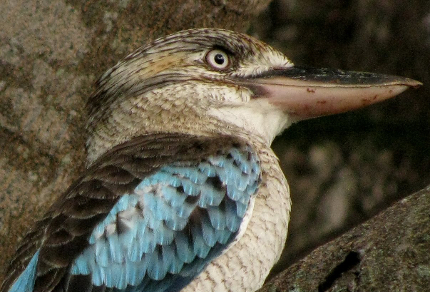Hid by tattered shreds of night, laughing kookaburras regaled the coming dawn with maniacal chortles and guffaws masquerading as territorial vocalizations. In the wildness of their sounds, I heard complete wilderness mocking the careful order of this city. For Australia’s Aboriginal peoples, the vocalizations of kookaburras play prominent roles in Creation stories, wherein Kookaburra was commissioned by the spirits to alert all the animals to the sun’s rising by calling out each morning.1 Other stories tell of Kookaburra mocking fellow creatures by laughing at their misfortunes.1 Both seem to fit.
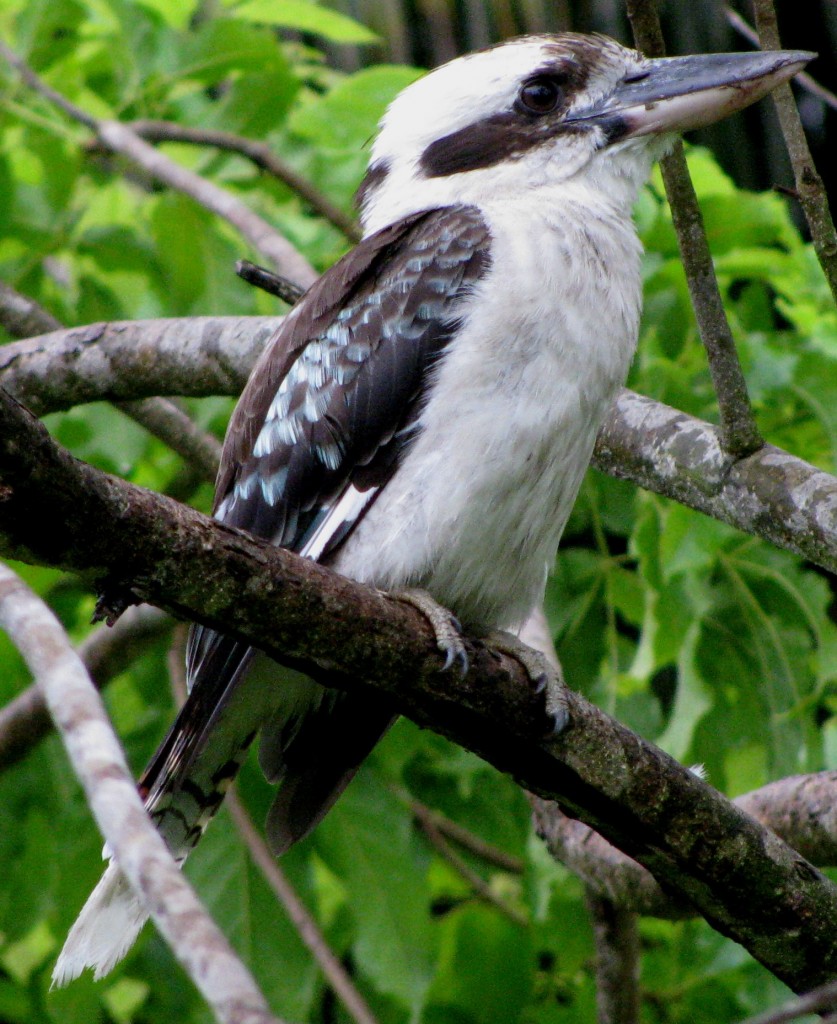
Laughing Kookaburra (© Magi Nams)
Like Australia’s indigenous peoples, European settlers instilled kookaburras into their lives and lore, naming them ‘Bushman’s Clock’ or ‘Alarm Bird’ and incorporating them into songs, poems, and storybooks for children.2 Marketers used images of the popular birds to promote products ranging from cigarette paper tubes to knitting needles.3 Australia’s military adopted the kookaburra as an emblem on naval, air force, and army insignia, as well as naming the ship HMAS Kookaburra after the big-headed, chisel-beaked bird.4 Like the kangaroo, koala, and platypus, the kookaburra became an Australian animal known throughout the world and is celebrated in the old “Kookaburra” song I learned as a child in Canada.
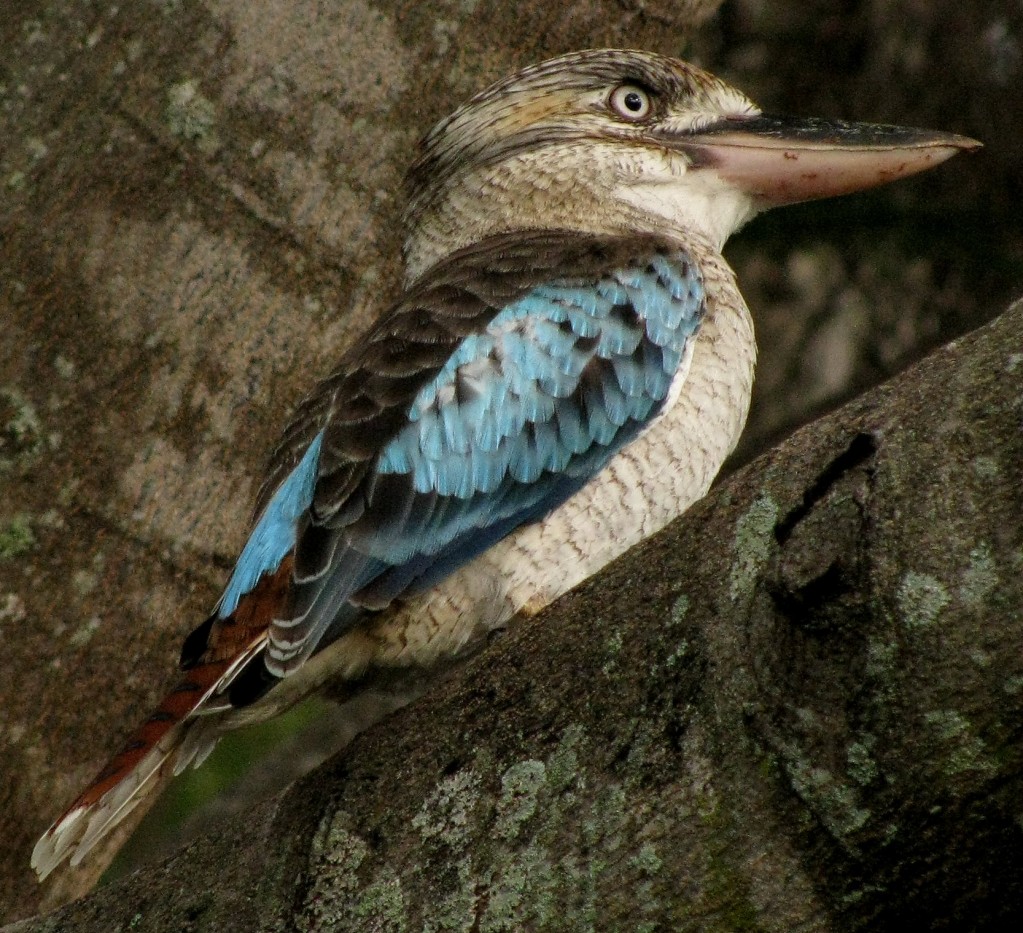
Female Blue-winged Kookaburra (© Vilis Nams)
Kookaburras, along with tree kingfishers such as the sacred and forest kingfishers common in the Townsville area, belong to the avian family Halcyonidae,5 which seems a bit of a contradiction considering the meaning of the word halcyon and the far-from-halcyon atmosphere created by kookaburras’ vocalizations. Australia is home to two species of kookaburras, of which the laughing kookaburra is endemic to this continent, whereas the blue-winged kookaburra resides in both Australia and New Guinea.6 The wings of laughing kookaburras possess some blue feathers, but this larger of Australia’s two kookaburras, with its predominantly brown and white plumage, is drab in comparison to the eye-catching beauty of the blue-winged kookaburra, with its brilliant iridescent wing and rump feathers (males have blue tail feathers, too).
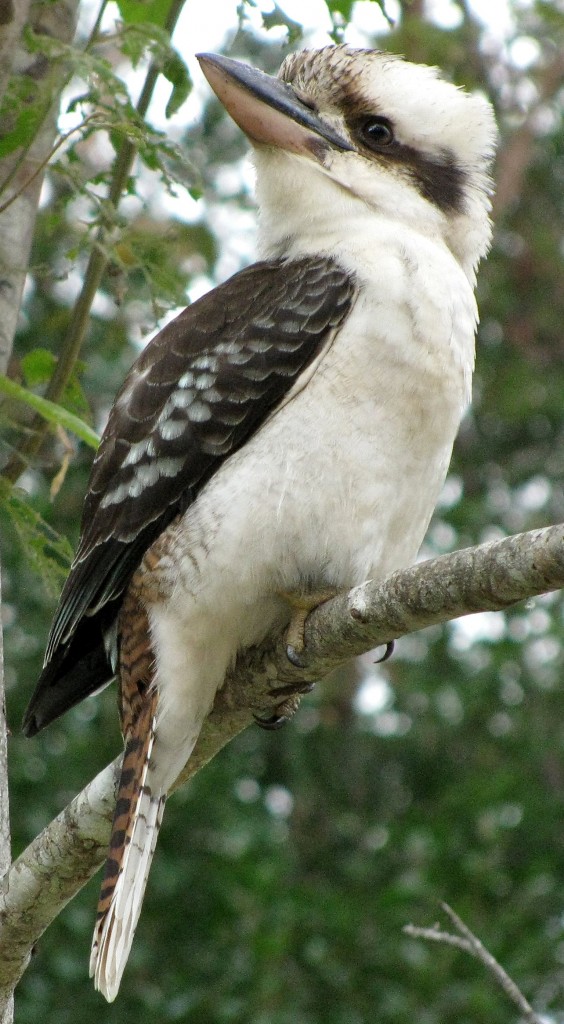
Laughing Kookaburra (© Vilis Nams)
Kookaburras live in many habitats excluding those of arid zones.7 The blue-winged kookaburra occurs in the top of the country, while the laughing kookaburra inhabits the east of the mainland from Cape York Peninsula to the south coast, and also occurs as an introduced species in southwest Western Australia and Tasmania.7 Kookaburras hunt from a perch, where they sit and wait until they spot a prey item, usually on the ground below.8 They feed on a wide variety of prey items, mostly insects, other arthropods, and small skinks, but also snakes (for which they are somewhat undeservedly famous), frogs (I’ve watched one bashing a frog against the ground to kill it), crustaceans, and worms – even the 2-metre giant Gippsland earthworm of South Australia.9
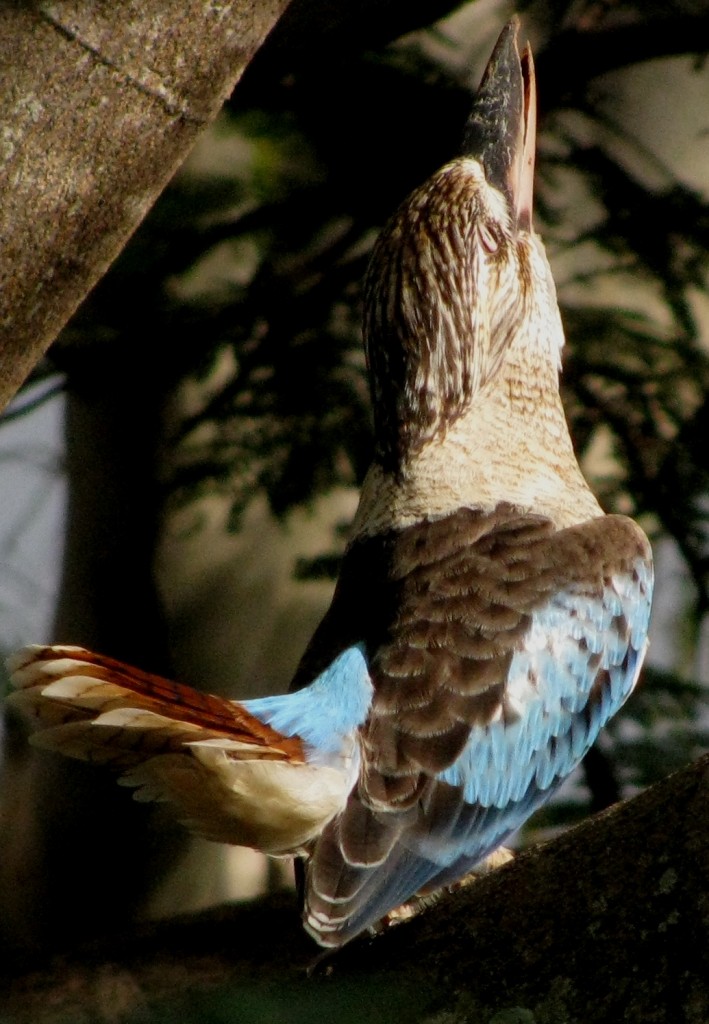
Female Blue-winged Kookaburra Vocalizing (© Vilis Nams)
Kookaburras typically nest in tree hollows and are what scientists call ‘cooperative breeders,’ meaning that groups of kookaburras include ‘helpers’ that assist in caring for the dominant pair’s young.10 Laughing kookaburras are strictly monogamous, with the dominant pair maintaining a faithful pair bond.10 During the spring months, breeding females lay their eggs, usually three, which require about three and a half weeks of incubation before hatching, after which the young kookaburras require another three months of parental care and attention before they can fend for themselves.11 During the weeks leading up to egg-laying time, kookaburras apparently put on quite a mating show, with even more raucous calling and aggressive territorial defensive.12 Should be interesting.
Reference:
1. Sarah Legge. Kookaburra: King of the Bush. 2004. CSIRO PUBLISHING, Collingwood, Victoria, pp. 1-2; 2. Ibid, pp. 3-11; 3. Ibid, pp. 9-10; 4. Ibid, pp. 7-9; 5. Ibid, p. 19; 6. Ibid, p. 21; 7. Ibid, p. 21; 8. Ibid, p. 42; 9. Ibid, pp. 42-43; 10. Ibid, p. 55; 11. Ibid, p. 59; 12. Ibid, pp. 60-61.

